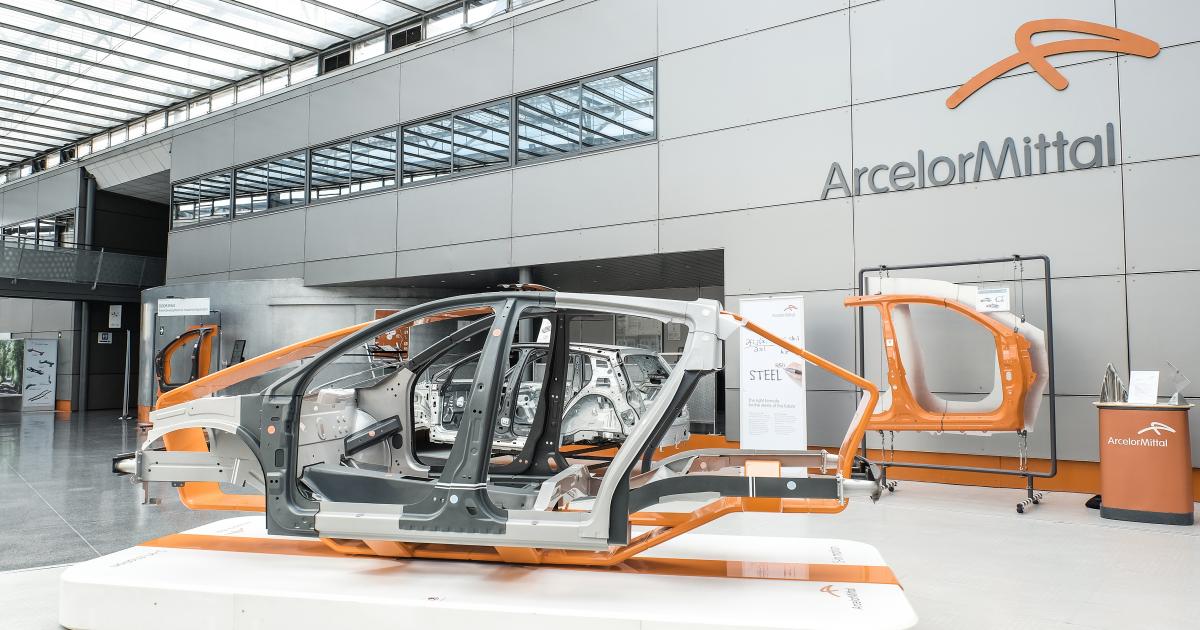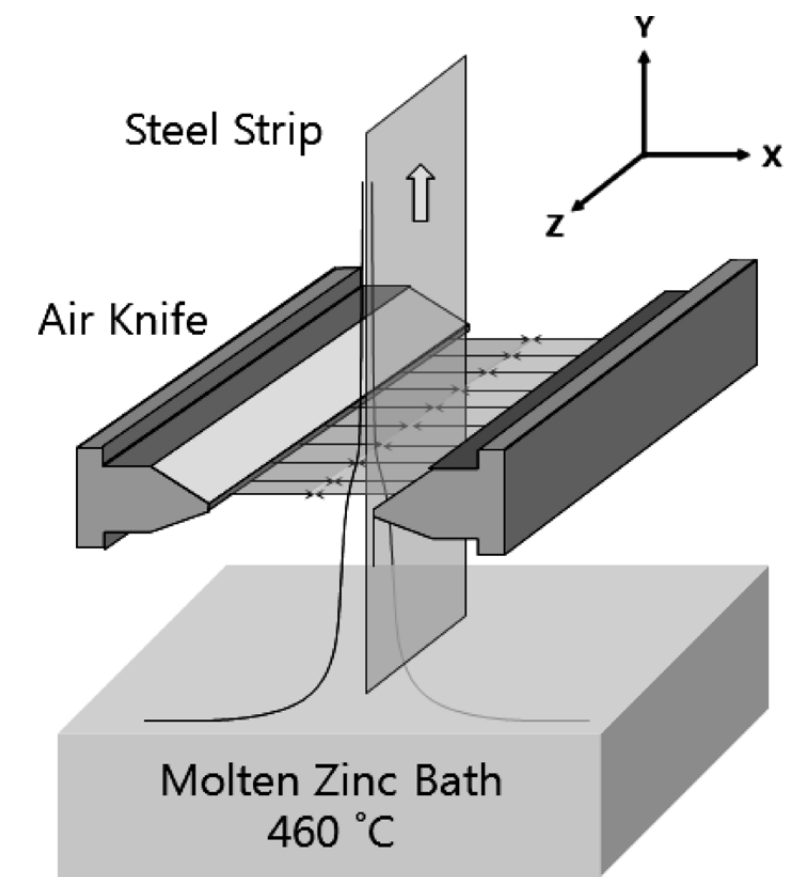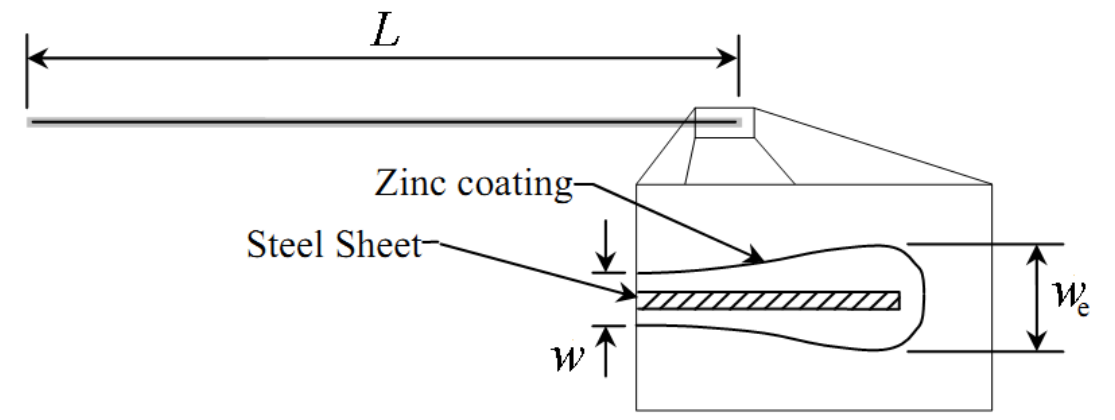Probleemstelling:
The galvanization process dates back to the 18th century; it has been used and continuously improved since then to give steel a corrosion resistant outer layer, as a far cheaper alternative to stainless steel. For that purpose, the steel is dipped in molten zinc which proceeds to form a protective oxide layer on cooling down. This product is used for many common applications (think lantern poles, screws, etc…), but ArcelorMittal takes it a step further: they have a high speed, continuous process where steel strips pass through a molten zinc bath at speeds of several meters per second. This produces high quality galvanized steel plate for use in e.g. the automotive industry. [1,2]
In the continuous hot dip galvanizing process (see video), a steel strip is passed through a bath of molten zinc as shown schematically in Figure 2. When the sheet is pulled vertically out of the bath, it is coated by a thin layer of molten zinc. To reduce the thickness of the coating further, opposing air knives remove excess material, a technique also called gas jet wiping. These air knives are high velocity planar jets of air (or sometimes nitrogen), with Mach numbers typically in the range of 0.3 - 0.8 [3]. This results in a complex process which is not yet completely understood at ArcelorMittal. Gaining a deeper understanding of the involved flow phenomena and improving the efficiency of the process calls for numerical modeling. This requires complex CFD simulations which can handle both compressible and multiphase flows.

Figure 1: Application in the automotive industry. [source]

Figure 2: The continuous galvanization process. [2]
